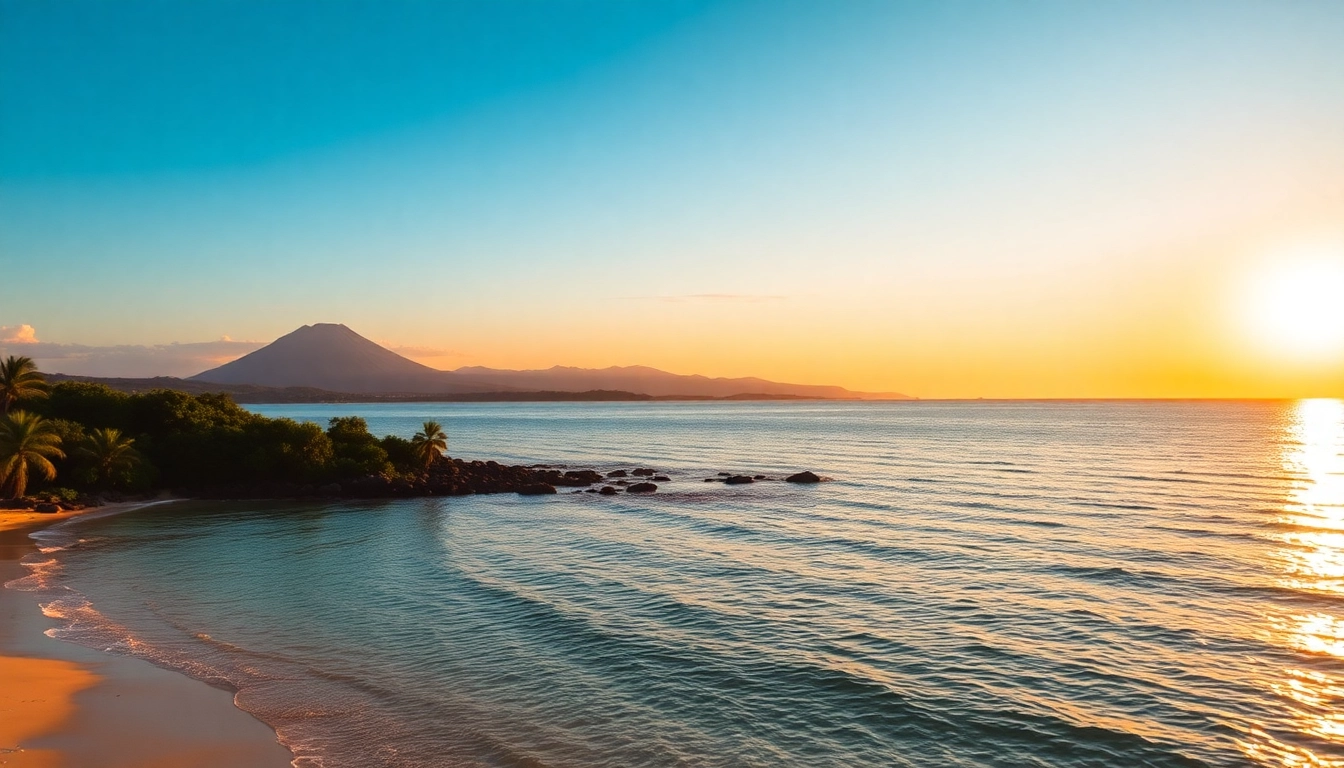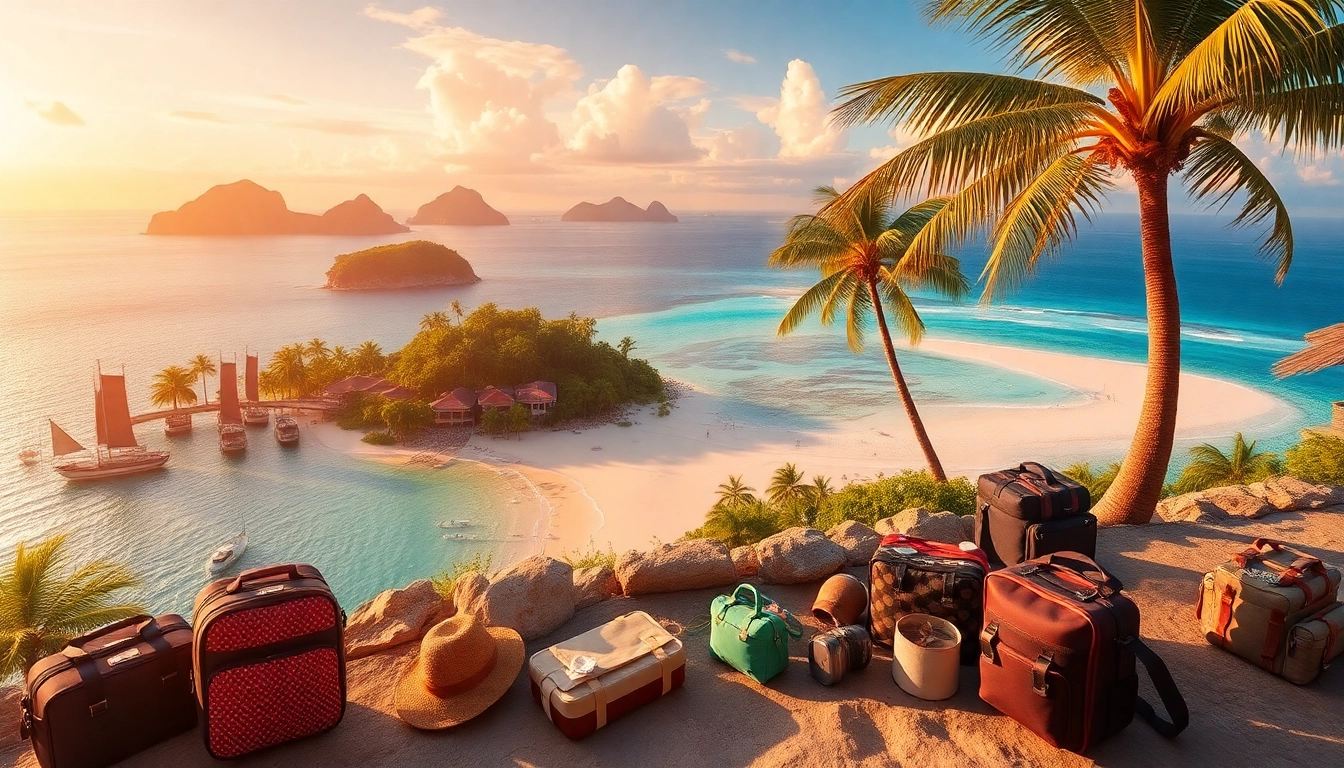Introduction to Lombok: Indonesia’s Hidden Paradise
Nestled within the Indonesian archipelago, Lombok remains one of Southeast Asia’s best-kept secrets. Often overshadowed by its more globally renowned neighbor Bali, this captivating island offers an authentic experience of Indonesia’s diverse natural beauty and rich cultural tapestry. With its pristine beaches, towering volcanoes, vibrant local traditions, and welcoming communities, Lombok beckons travelers seeking adventure, serenity, and cultural immersion. To truly understand the unique allure of this island, it’s essential to explore its geography, history, natural wonders, cultural heritage, and practical travel insights. Whether you’re an adventure enthusiast, a cultural explorer, or a leisure traveler, Lombok promises a memorable journey that stands apart from other destinations.
For an in-depth exploration and latest updates on the island, visit the official Lombok website, which offers travel guides, cultural insights, and current news about this vibrant island.
Geography and Location of Lombok
Lombok is part of the Lesser Sunda Islands, located east of Bali and west of Sumbawa, within the Indonesian archipelago. Covering approximately 4,738 square kilometers, it features a diverse topography that includes rugged mountains, lush forests, and idyllic beaches. The island is separated from Bali by the narrow Lombok Strait, approximately 35 kilometers wide at its narrowest point, facilitating maritime connectivity for tourism and trade.
The island’s geographic layout is characterized by the towering Gunung Rinjani, Indonesia’s second-highest volcano at 3,726 meters above sea level. This volcanic massif dominates the northern part of Lombok and is a central feature revered both ecologically and culturally. The southern coast boasts white sandy beaches and coral reefs, offering perfect conditions for water-based activities, while the central and eastern regions are dotted with rice terraces and traditional Sasak villages.
Lombok’s strategic location in the Coral Triangle makes it an ecological hotspot for marine biodiversity. Its surrounding waters are teeming with colorful reefs, diverse fish species, and marine mammals, making it a premier destination for divers and snorkelers. The island’s tropical climate fosters lush vegetation and year-round greenery, with the dry season from May to September and the rainy season from October to April shaping its ecological dynamics.
Historical Background and Cultural Heritage
The history of Lombok is deeply intertwined with indigenous traditions, early settlements, and interactions with neighboring regions. The Sasak people, the island’s predominant ethnic group, have inhabited Lombok for thousands of years, developing a rich cultural heritage that remains vibrant today. Their history is marked by traditional weaving, pottery, and distinctive musical and dance performances that reflect their ancestral beliefs and social structures.
Historically, Lombok was a significant center for trade and maritime commerce, engaging with Indian, Chinese, and Arab traders. The influence of Hinduism and Buddhism, evident from ancient temples and relics, gradually gave way to Islam during the 17th and 18th centuries, shaping the island’s religious landscape. Notable cultural sites include the ancient Pura Lingsar Hindu temple complex and various Sasak traditional villages that preserve centuries-old customs.
Despite modern development, Lombok has maintained its traditional identity, partly due to its strong indigenous community bonds and efforts in cultural preservation. Festivals like the Bau Nyale sea worm catching ritual, held annually to honor Princess Mandalika, showcase the island’s unique blend of myth, tradition, and community spirit. These celebrations are not only cultural spectacles but also vital in preserving local history in modern times.
Why Lombok Stands Out Among Indonesian Islands
Lombok distinguishes itself through a harmonious blend of natural beauty and authentic cultural experiences. Unlike Bali, which is often characterized by its bustling tourism industry and commercialized attractions, Lombok offers a more laid-back ambiance with pristine environments and fewer crowds. The island’s raw landscapes, from towering volcanoes to untouched beaches, provide a canvas for adventure and relaxation alike.
Its diverse ecosystems and cultural richness make Lombok a multifaceted destination for travelers. The presence of active volcanoes like Rinjani, along with the serene beaches of Gili Trawangan, Gili Air, and Gili Meno, gives visitors contrasting experiences within short distances. Furthermore, the traditional Sasak villages offer insights into local customs and handicrafts that remain largely untouched by mass tourism, fostering sustainable growth and community-based tourism.
Lombok’s strategic focus on eco-tourism and cultural preservation resonates with contemporary travelers seeking responsible tourism options. This commitment ensures that visitors can enjoy authentic, immersive experiences while contributing positively to local communities. Overall, Lombok’s unique character, blending adventurous landscapes with genuine cultural hospitality, truly sets it apart from other Indonesian islands.
Top Attractions and Natural Wonders of Lombok
Mount Rinjani: Indonesia’s Second Highest Volcano
Dominating Lombok’s landscape, Mount Rinjani is an iconic symbol of the island’s natural grandeur. Standing at 3,726 meters, it is Indonesia’s second-highest volcano and a favorite among trekkers seeking a challenging yet rewarding adventure. The Rinjani trekking trail passes through diverse terrains, including lush forests, hot springs, and crater lakes, culminating at the summit where travelers are rewarded with breathtaking panoramic views.
The Rinjani National Park, designated as a UNESCO Geopark, provides not only a playground for adventure enthusiasts but also a sanctuary for diverse flora and fauna. Key features include the Segara Anak crater lake, known for its stunning turquoise waters, and the surrounding caldera. Proper preparation, guided tours, and respect for conservation efforts are essential for a safe and responsible visit.
Beaches and Surf Spots
Lombok’s southern coast boasts some of the most beautiful beaches in Indonesia, renowned for their white sand, clear waters, and consistent surf conditions. Tanjung Aan, with its distinctive pepper-like sand grains, is ideal for sunbathing, picnicking, and beginner surfing. Kuta Beach Lombok provides larger waves perfect for intermediate and advanced surfers seeking an authentic surfing experience away from crowded Bali spots.
Other notable beaches include Selong Belanak, famous for its gentle surf suitable for beginners, and Mawun Beach, which offers a tranquil environment for swimming and relaxing. The beaches are also excellent spots for witnessing spectacular sunsets, beachcombing, and beachside warungs serving fresh seafood.
Gili Islands and Marine Life
The Gili Islands—Gili Trawangan, Gili Air, and Gili Meno—are tiny paradise islands just off Lombok’s northwest coast. Known globally for their vibrant coral reefs, crystal-clear waters, and laid-back atmospheres, they are top destinations for diving, snorkeling, and marine exploration. Gili Trawangan, the largest, offers a lively nightlife scene, while Gili Meno and Gili Air are perfect for peaceful retreats.
Marine biodiversity around the Gilis is astonishing, including sea turtles, reef sharks, colorful reef fish, and manta rays. Several dive operators and eco-friendly tours operate on the islands, emphasizing conservation and sustainable tourism. The islands’ small size makes them easily accessible from Lombok’s main hub and provides a quintessential tropical island experience.
Cultural Experiences and Traditional Village Life
Local Crafts and Artisan Communities
Traditional craftsmanship is at the heart of Lombok’s cultural identity. The island is renowned for its woven textiles called ‘songket’ and ‘ikat,’ produced by local artisans using intricate weaving techniques passed down through generations. Visitors can explore villages such as Sukarara, known for its weaving communities, where they can observe artisans at work and purchase authentic souvenirs.
Pottery making, wood carving, and silver jewelry are other notable crafts, often reflecting indigenous motifs and religious symbols. Supporting local artisans through purchasing directly from villages or cooperatives encourages sustainable livelihoods and helps preserve these centuries-old traditions.
Traditional Sasak Cuisine and Festivals
Sampling Sasak cuisine offers a taste of Lombok’s unique flavors and culinary heritage. Signature dishes include ‘Bebalung’ (slow-cooked beef or goat), ‘Sate Rembiga’ (spiced grilled meat), and ‘Sambal Matah’ (a fresh spicy chili relish). Traditional eateries and floating markets provide authentic dining experiences that highlight locally sourced ingredients and cooking techniques.
Festivals such as Bau Nyale, a colorful sea worm-catching event held annually in February, exemplify Lombok’s vibrant cultural calendar. Participants gather on beaches to catch the Nyale, believed to be the incarnation of Princess Mandalika, and celebrate with music, dance, and communal feasts. These festivals serve as meaningful windows into the island’s mythologies, social cohesion, and religious practices.
Heritage Sites and Temples
Historical and religious sites further enrich Lombok’s cultural landscape. The Pura Lingsar temple complex, a unique Hindu-Islamic sanctuary, embodies centuries of religious harmony. Old Islamic mosques, Sasak tombs, and ancient stone carvings scattered across the island reveal a layered history of spiritual coexistence. Visiting these sites offers insight into local beliefs, architecture, and community rituals that have persisted over generations.
Adventure and Eco-Tourism Activities in Lombok
Hiking, Trekking, and Outdoor Adventures
Lombok is a haven for outdoor enthusiasts. Trekking to Mount Rinjani remains the most popular adventure activity, attracting experienced hikers and nature lovers. Other options include canyoning, mountain biking, and jungle trekking through protected forests and remote villages. Many tour operators offer guided adventures with a focus on safety, environmental impact, and cultural respect.
For less challenging experiences, walking or cycling around traditional villages or exploring rice terraces offers immersive ways to engage with the local environment and lifestyle.
Eco-Friendly Tours and Conservation Efforts
Awareness of environmental sustainability is growing among local communities and tourism operators. Eco-friendly tours focus on minimal environmental impact, coral reef protection, and wildlife conservation. Initiatives include marine conservation programs, reforestation drives, and community-led waste management efforts.
Participating in such activities not only enhances your travel experience but also contributes to the island’s ecological resilience. Look for operators certified by sustainability standards or those actively involved in conservation projects.
Water Sports, Diving, and Snorkeling Hotspots
With its rich marine biodiversity, Lombok offers excellent diving and snorkeling opportunities. Dive sites like Turtle Reef, Sekotong, and the Gili Islands feature vibrant coral reefs, abundant marine life, and clear waters. PADI-certified dive centers provide courses and guided dives suitable for all levels.
Snorkeling around the beaches and coral gardens enables you to observe sea turtles, tropical fish, and colorful reefs without extensive training. Water sports such as kite surfing, paddleboarding, and kayaking are also popular on Lombok’s beaches, providing adrenaline-fueled alternatives for thrill-seekers.
Planning Your Visit: Tips, Accommodation, and Travel
Best Time to Visit Lombok for Weather and Events
The ideal time to visit Lombok is during the dry season, from May to September, when weather conditions are optimal for outdoor activities, sightseeing, and beach holidays. During these months, visitors enjoy sunny skies, minimal rainfall, and calmer seas. The festival calendar also peaks during this period, with events such as Bau Nyale and local cultural celebrations taking place.
While the rainy season (October to April) brings lush landscapes and fewer tourists, it may pose challenges for trekking and outdoor adventures due to heavy rainfall and occasional surf advisories. Nevertheless, the rainy season offers a quieter, more introspective experience with vibrant greenery and lower accommodation costs.
Accommodation Options from Luxury Resorts to Homestays
Lombok’s accommodation spectrum ranges from luxurious beachfront resorts to charming eco-lodges and budget homestays. High-end resorts in Senggigi, Kuta Lombok, and the Gili Islands feature modern amenities, private pools, and spa services tailored for comfort and indulgence. These options are ideal for travelers seeking relaxation and pampering.
For authentic cultural experiences and budget-friendly options, homestays and guesthouses in traditional Sasak villages provide immersive stays. Many community-based accommodation initiatives support local livelihoods while offering travelers a chance to live as locals, participating in daily activities and rituals.
Getting Around Lombok: Transportation and Travel Essentials
Efficient travel within Lombok is facilitated by various transportation modes. Renting a private scooter or motorcycle remains the most popular and economical choice for exploring remote areas and scenic routes. Always wear protective gear and ensure your license is valid.
Car rentals with drivers are available for more comfortable and safe travel, especially for family groups or when visiting distant sites like Mount Rinjani. Public transportation options include minibusses (bemo), but they are less reliable and lack comfort for long journeys. Taxis and ride-hailing services are gradually expanding but are still limited in some areas.
For international travelers, flying into Lombok International Airport (Bandara Internasional Lombok) provides easy access from Bali, Jakarta, and other major Indonesian cities. Ferries and speedboats connect Lombok to neighboring islands, facilitating island-hopping adventures and exploration of surrounding destinations.

